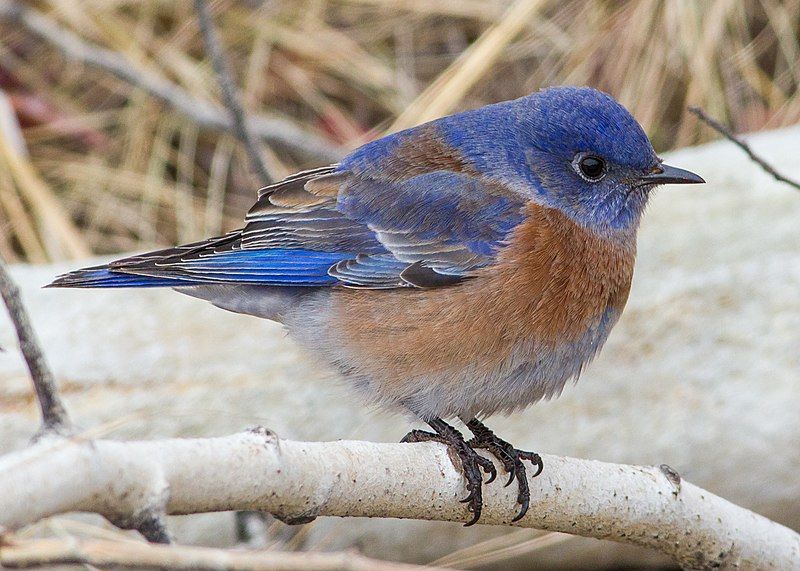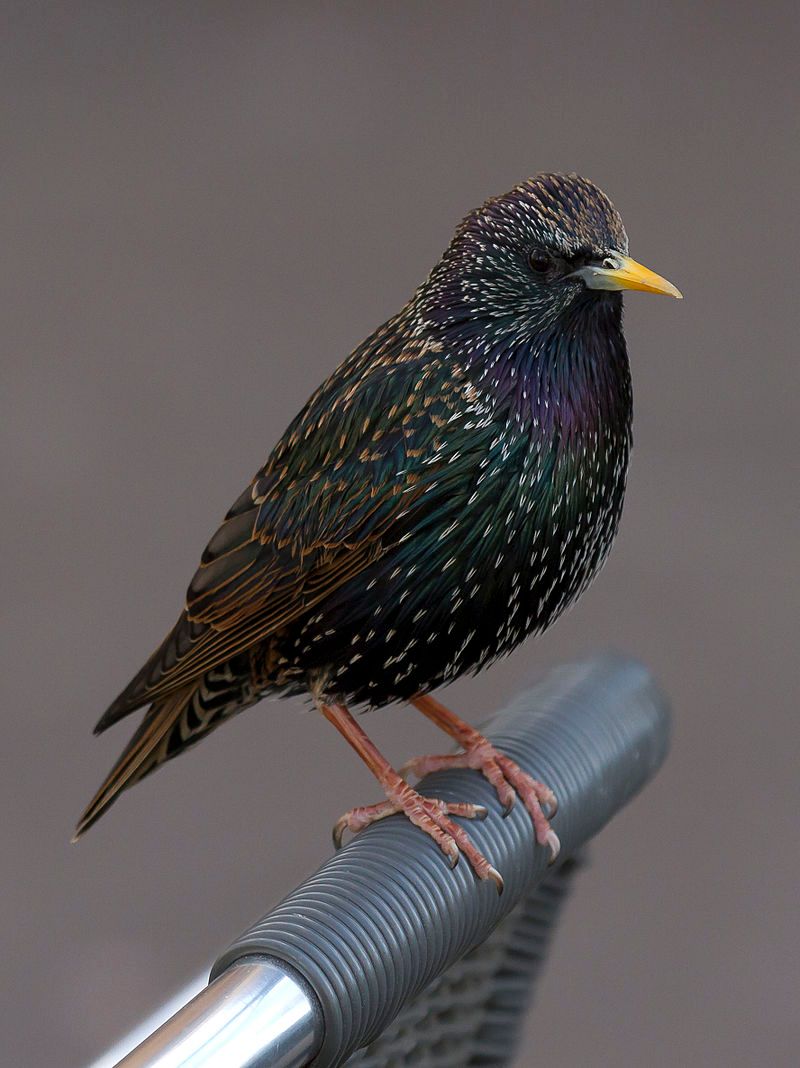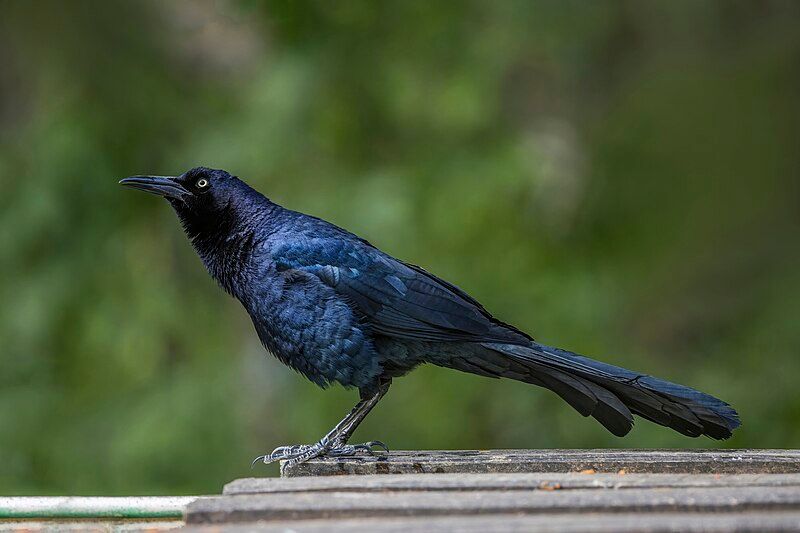The sight of bluebirds in Nevada is beautiful, bringing peace and serenity to the Desert landscape. Bluebirds are a species native to North America and found throughout Nevada.
These birds have a variety of habitats, ranging from high-altitude forests to desert cliffs and canyons. Bluebirds are a famous sight in Nevada, providing an enjoyable experience for birdwatchers.
They also benefit the environment by providing pollination and pest control services. Nevada has a few different species of bluebirds, each with unique characteristics and habits.
With a bit of patience and knowledge, it is possible to observe and learn about these magnificent birds.
8 Stunning Blue Birds in Nevada’s Wilderness
If you are a bird lover and live in or visit Nevada, you are in for a treat. Nevada is home to some of the most stunning blue birds in the world, and they can be found in various habitats across the state.
Here are 8 of the most amazing bluebirds you can see in Nevada’s wilderness and give you some tips on identifying and enjoying them.
1. Mountain Bluebird
The mountain bluebird is a small, migratory thrush found in the mountainous regions of western North America. It has a light underbelly and black eyes, and adult males have thin bills and are a bright turquoise-blue color, with a lighter color on the underside.
This bird is found amongst the rocky, high-altitude habitats of the western United States and Canada and can often be seen flitting between nearby trees and shrubs. It feeds on insects, which it catches in mid-air, and its diet includes berries and other fruits.
The bright blue coloring of the male mountain bluebird is thought to be a sign of territoriality and a way of attracting mates. The female is a duller blue-gray color and is usually found close to her nest, which she builds in cavities of trees or other structures.
The mountain bluebird is a beloved sight in the western sky and a reminder of nature’s beauty.
| Kingdom | Animalia |
| Phylum | Chordata |
| Class | Aves |
| Order | Passeriformes |
| Family | Turdidae |
| Genus | Sialia |
| Species | S. currucoides |
2. Blue Grosbeak
The blue grosbeak is a passerine bird that belongs to the cardinal family Cardinalidae. It is a medium-sized bird that is native to North America. This bird is mainly migratory, meaning it will travel to a different location for the winter and return for the summer.
During the winter months, blue grosbeaks travel to Central America and spend summer in northern Mexico and the southern United States. The male blue grosbeak has a beautiful blue plumage and two brown wing bars.
This species is a famous bird amongst birdwatchers and is often seen in wooded areas and open fields.
| Kingdom | Animalia |
| Phylum | Chordata |
| Class | Aves |
| Order | Passeriformes |
| Family | Cardinalidae |
| Genus | Passerina |
| Species | P. caerulea |
3. Steller’s Jay
Steller’s Jay is a beautiful and unique bird native to North America’s western regions and Central America’s mountains. It is one of the few birds that has a distinct crest on its head.
It is closely related to the Blue Jay, a bird found in the eastern regions of North America, but Steller’s Jay is the only crested Jay found west of the Rocky Mountains.
It is a giant bird, more significant than the Blue Jay, measuring 10-11 inches long, with a wingspan of up to 17 inches. The Steller’s Jay has a deep blue head, neck, wings, lighter blue feathers, and a black tail.
Its distinctive call is a loud ‘jay, jay’ sound, and its diet consists of various nuts, seeds, and insects. In addition to its beauty, Steller’s Jay is known for its intelligence and curiosity.
It has been known to mimic the sounds of other birds and steal food from unsuspecting hikers. It is an integral part of North American ecosystems, helping control small mammal and insect populations.
| Kingdom | Animalia |
| Phylum | Chordata |
| Class | Aves |
| Order | Passeriformes |
| Family | Corvidae |
| Genus | Cyanocitta |
| Species | C. stelleri |
4. Lazuli Bunting
The lazuli bunting is a species of small songbird found across North America. It is best known for its vibrant plumage, bright blues, blues, and purples reminiscent of the gemstone lapis lazuli.
The bird’s name is derived from this gemstone and was given to the species in the early 19th century.
The male lazuli bunting is especially striking, with a bright blue head, a black bib and white stripe extending from its eyes to its shoulders, and a deep blue-purple back and wings. Females are a duller grey-brown, with a light brown head and wings.
The bird breeds across the continent, from Alaska and central Canada to the southwestern United States. Breeding season for the Lazuli Bunting begins in late May and lasts until August.
During this time, the males are very vocal and can be heard singing their distinct song of “tsee-tsee-tsee.” The birds make their nests in shrubs or low trees and usually lay three to five eggs.
The eggs hatch in about two weeks, and the chicks fledge in about two weeks. The Lazuli Bunting is a common species found in various habitats, including open woods, grassy areas, deserts, and shrublands.
It feeds on seeds, insects, and nectar and is usually seen alone or in pairs. Its bright plumage makes it a famous bird to watch, often seen in bird gardens and parks.
| Kingdom | Animalia |
| Phylum | Chordata |
| Class | Aves |
| Order | Passeriformes |
| Family | Cardinalidae |
| Genus | Passerina |
| Species | P. amoena |
5. California Scrub Jay

The California scrub Jay is a species of bird that is native to the western part of North America. Its range extends from southern British Columbia in Canada southward throughout California and into west Nevada near Reno.
It is also found to the west of the Sierra Nevada mountain range, which runs along much of the eastern side of California. This bird species is known for its vibrant blue and grey feathers, black facial mask, and white chest.
The California scrub Jay is a social bird, often seen in groups of two to four individuals. They feed on various items, including insects, seeds, nuts, and fruits.
They are common in parks and gardens, where they scavenge for food. The California scrub Jay is an essential species in the ecosystem, helping to disperse seeds and aid in pollination. They also provide food for larger animals such as hawks, owls, and foxes.
This species is considered to be of least conservation concern, as its population has remained stable and is not yet threatened.
| Kingdom | Animalia |
| Phylum | Chordata |
| Class | Aves |
| Order | Passeriformes |
| Family | Corvidae |
| Genus | Aphelocoma |
| Species | A. californica |
6. Western Bluebird

The western bluebird is a type of bird found in North America. It belongs to the thrush family, a group of birds known for their beautiful singing. The western bluebird is a small bird measuring six to seven inches long.
It is easily recognizable by its bright blue feathers and reddish-orange breast. The western bluebird is known for its long, thin beak and short, round tail. The bluebird of the west can be found in open woodlands, meadows, and other areas with plenty of trees and shrubs.
They feed mainly on insects and berries they catch while in flight. They also eat seeds and other small items they find on the ground.
During winter, they may form small flocks and move to warmer climates. The western bluebird is an integral part of the North American ecosystem. They help to control the insect population, which helps to keep plant life healthy.
They also act as pollinators, helping to spread pollen from flower to flower. They are also important to humans, as they help to balance the ecosystem and provide food for other animals.
| Kingdom | Animalia |
| Phylum | Chordata |
| Class | Aves |
| Order | Passeriformes |
| Family | Turdidae |
| Genus | Sialia |
| Species | S. mexicana |
7. Common Starling

The common starling is a bird species found in several parts of the world. It is native to Europe, North America, and parts of Asia and also found in parts of Africa. It is a medium-sized passerine bird that belongs to the starling family Sturnidae.
It is known by many different names depending on its location. In North America, it is known as the European starling; in Great Britain and Ireland, it is referred to as the starling.
Its distinctive black plumage and yellow bill easily recognize the common starling. It has a short tail and a pointed head, and its wingspan can reach up to 23 inches. This bird species is quite friendly and often congregates in large flocks.
It is known to be quite vocal, producing a wide range of sounds and calls. The common starling feeds on various foods, including insects, fruit, and seeds. It nests in cavities or holes in trees, buildings, and other animal nests.
Its eggs are typically blue or greenish-white with brown spots. This bird species is a popular subject for both bird watchers and photographers. It is also considered a nuisance by some, as it can cause damage to crops and gardens.
| Kingdom | Animalia |
| Phylum | Chordata |
| Class | Aves |
| Order | Passeriformes |
| Family | Sturnidae |
| Genus | Sturnus |
| Species | S. vulgaris |
8. Great-Tailed Grackle

The great-tailed grackle, also known as the Mexican grackle, is a medium-sized bird belonging to the Icteridae family. This species is mainly native to North and South America and is one of the ten existing species of grackle.
The great-tailed grackle is closely related to the boat-tailed grackle and the extinct slender-billed grackle. The great-tailed grackle is a passerine bird, meaning that it belongs to the order of passing birds, which includes a variety of species such as songbirds, woodpeckers, and parrots.
This species of bird is highly social and usually groups together in large numbers. It is typically found in open woodlands, fields, and parks, where it can search for food. The great-tailed grackle is a medium-sized bird with a length of about 12.5 inches (32 centimeters).
Its body is mainly black, with patches of purple and greenish-blue on its wings and tail. It has a bright yellow eye that stands out against its dark fur. The great-tailed grackle is known for its distinctive call: a loud, harsh “quark.”
This call often serves as a warning to other birds when danger is near. The great-tailed grackle also has a variety of songs and calls that it uses to communicate with other birds. The great-tailed grackle is an essential species in North and South American ecosystems.
It is a significant predator of insects, helping to control insect populations. It also serves as a food source for other animals, such as hawks and owls.
| Kingdom | Animalia |
| Phylum | Chordata |
| Class | Aves |
| Order | Passeriformes |
| Family | Icteridae |
| Genus | Quiscalus |
| Species | Q. mexicanus |
Conclusion
Bluebirds are an integral part of Nevada’s wildlife. They are found throughout the state and can be seen in many habitats, from mountain peaks to desert valleys.
They are essential to the ecosystem’s health and provide food and shelter for other animals. They are also a source of joy and beauty for humans who appreciate the beauty of these birds.
Bluebirds in Nevada are an essential part of the natural landscape, and their presence should be celebrated and protected.